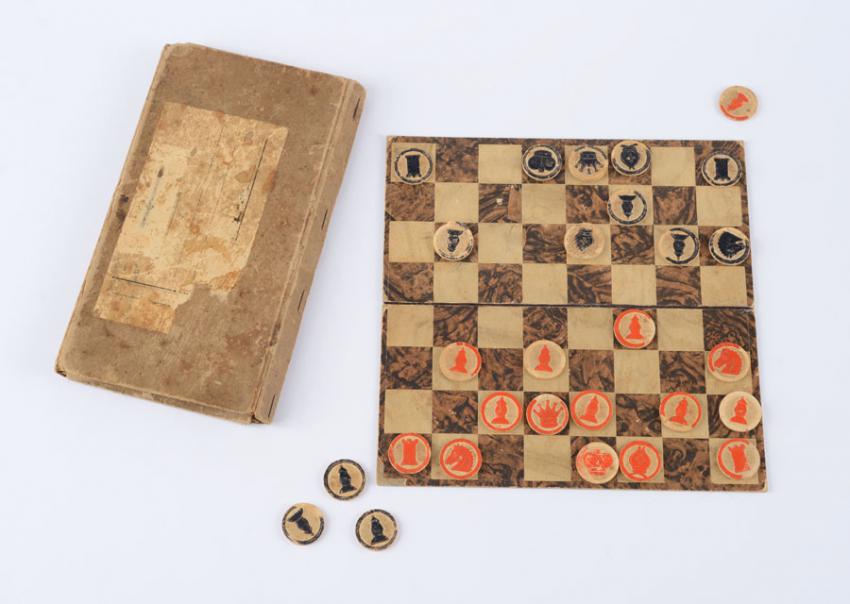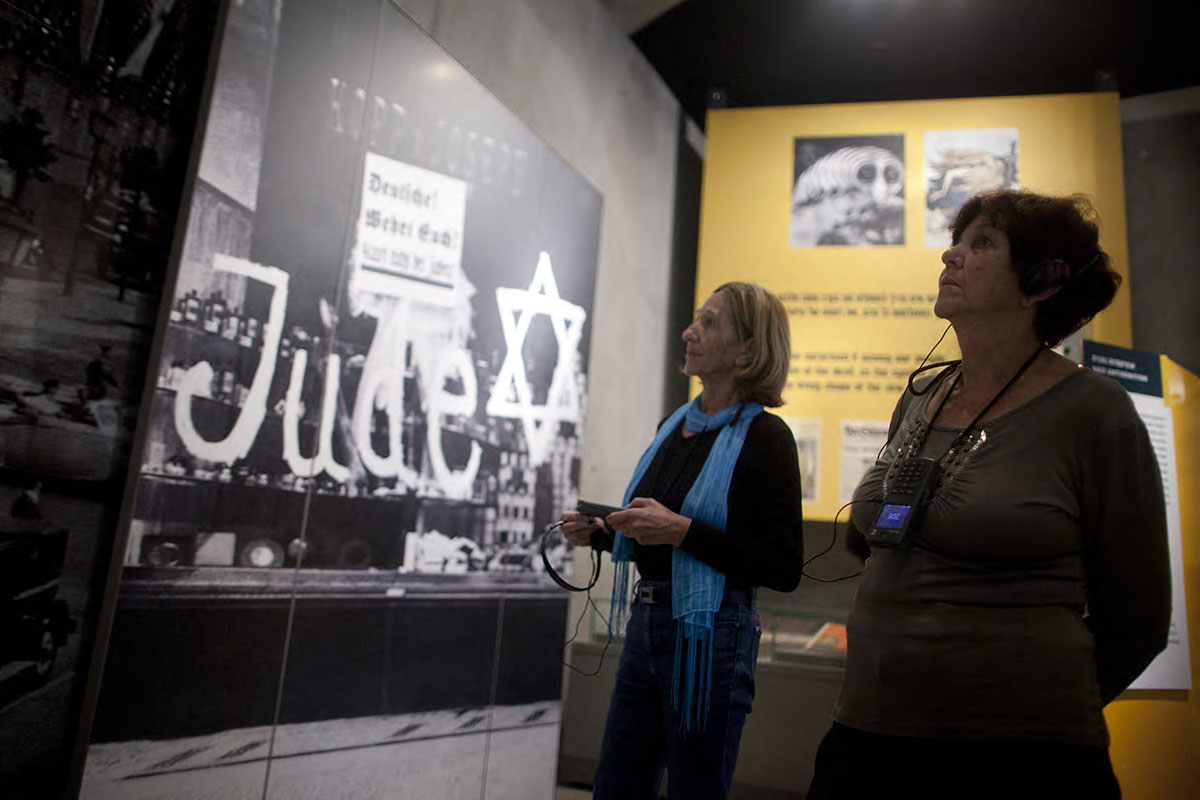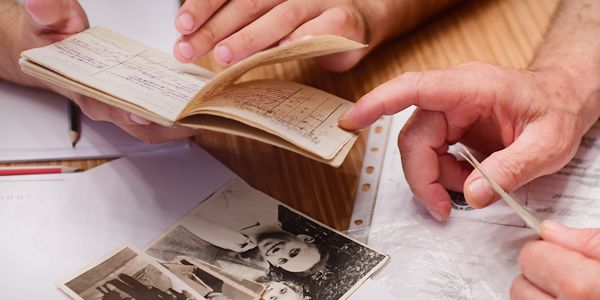Preserved in the Artifacts Collection of Yad Vashem's Museum are approximately twenty chess sets that were used by Jews during the Holocaust. Some were crafted during the war, others were made before the war and taken with Jews who were deported from their homes. Playing chess helped to alleviate the suffering of Jews and allowed them a few brief moments of relief from the hunger, the cold and the fear, temporarily easing their loneliness and sense of isolation.
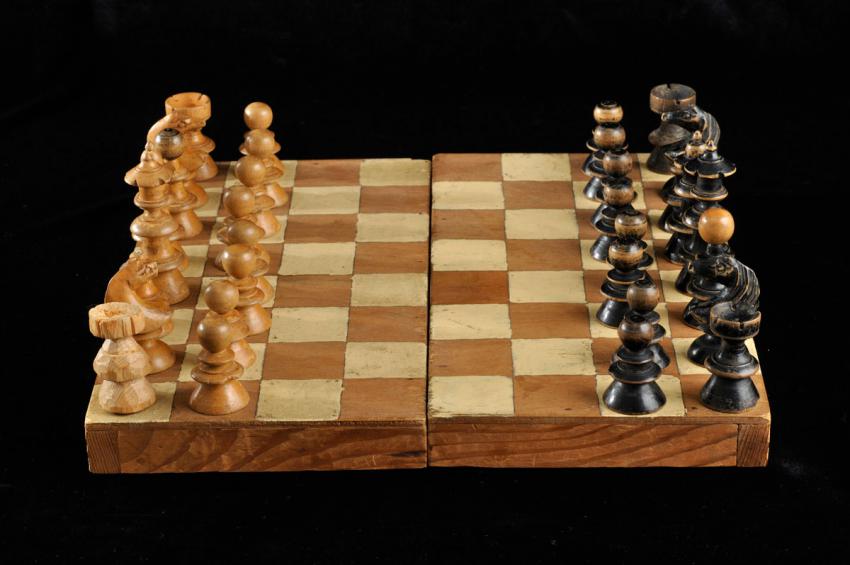
Chess set – the only remaining item from the Rennert family home
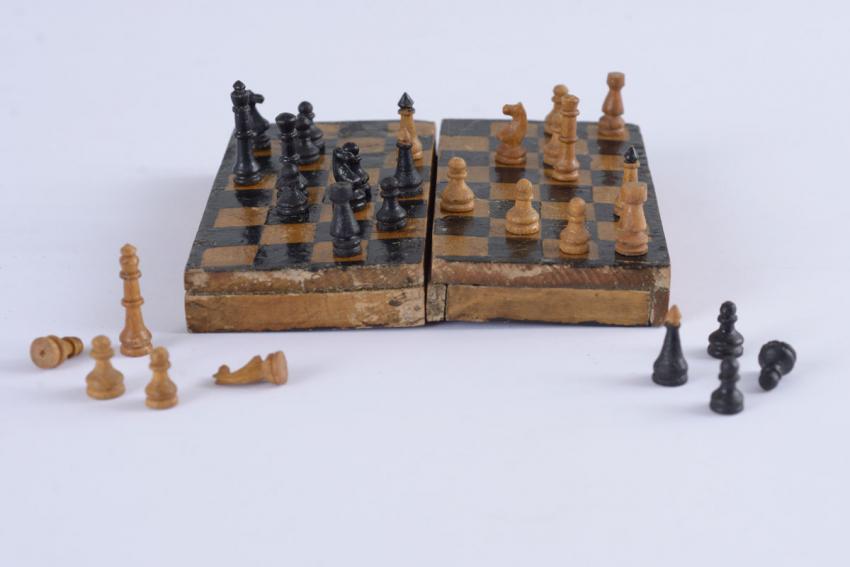
A Workshop for making chess pieces in a Detainment Camp in Cyprus
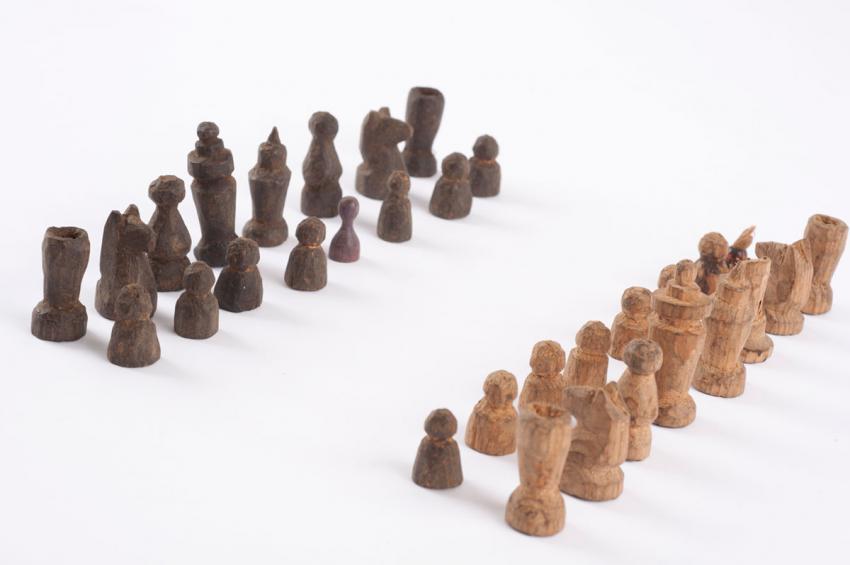
Chess pieces found scattered on the sidewalk next to the Giske family home in Lodz
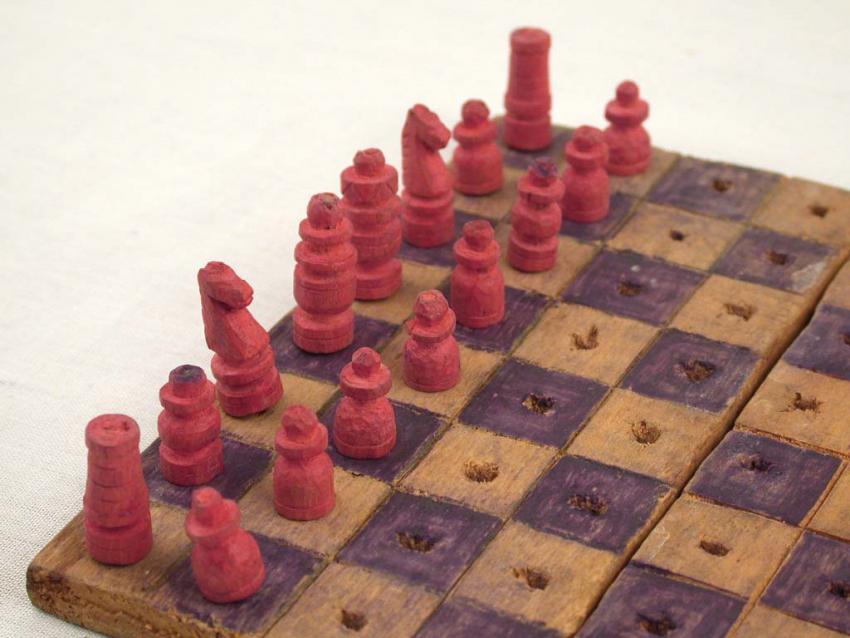
Chess pieces carved by Elhanan Ejbuszyc in Auschwitz from his block leader's club
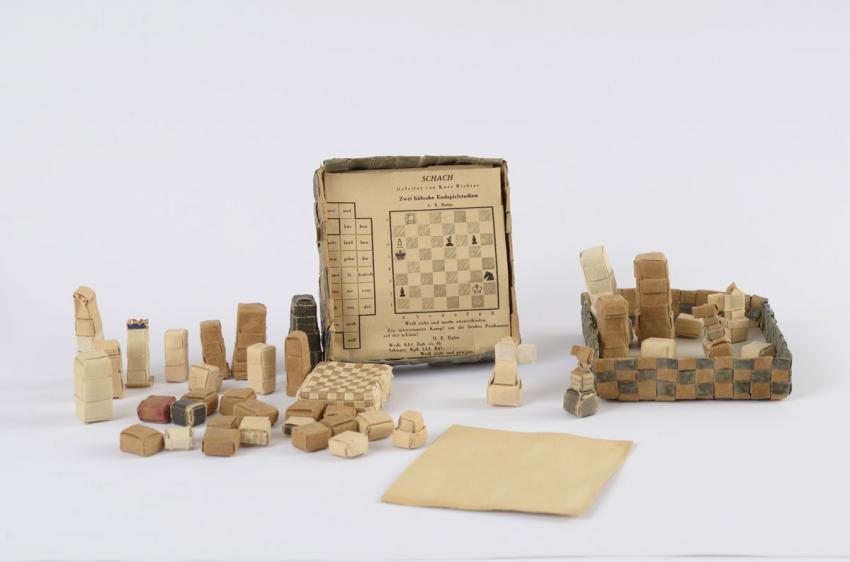
Chess set made from paper in the Buchenwald camp by political prisoner Hermann Rautenberg, a Jew from Berlin
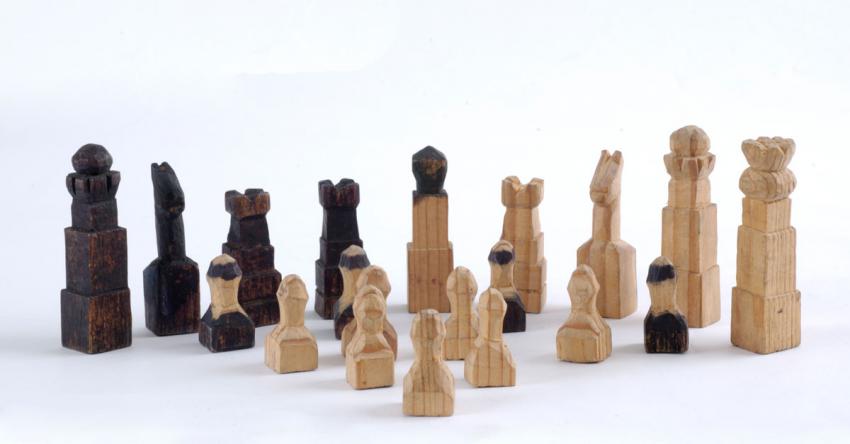
Chess pieces that Zigmund Stern carved for his son in the family's hideout
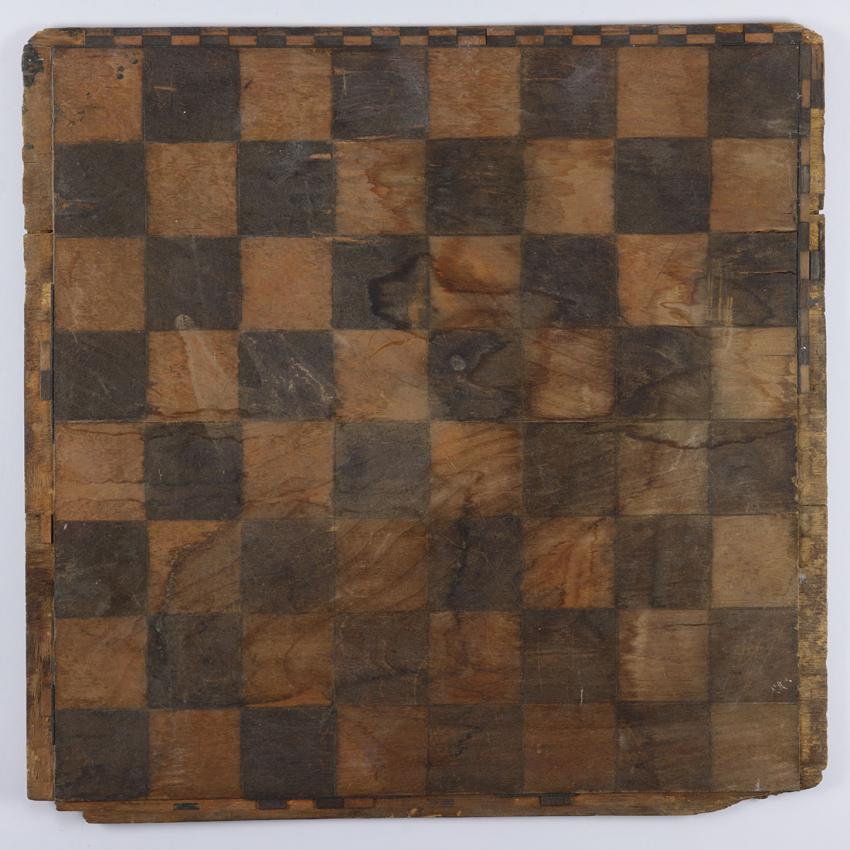
Chess board used by the youth Issachar Parkiet and his family in their hideout
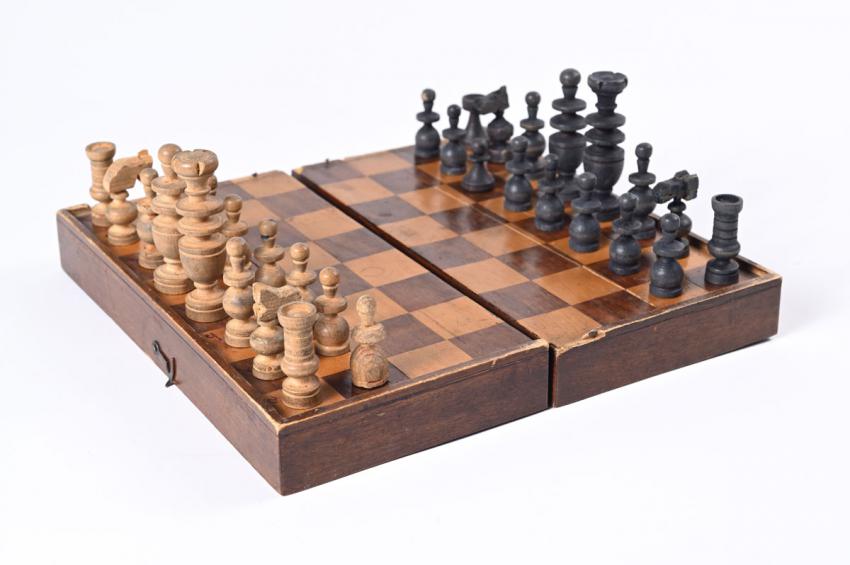
Chess set that belonged to Lupu (Ze'ev) Credinciosu who died on the "Death Train" that left Iasi in June 1941
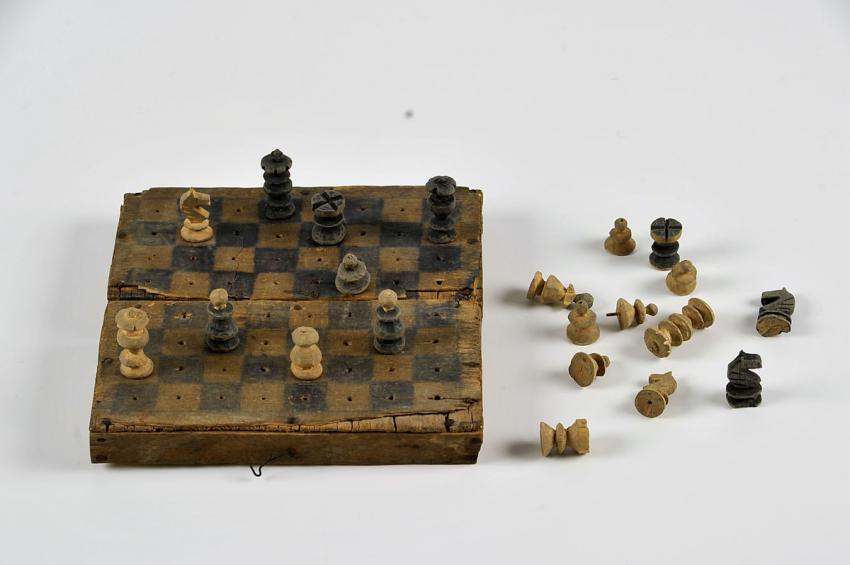
A Chess Set from Transnistria – From Parting Gift to Reunion
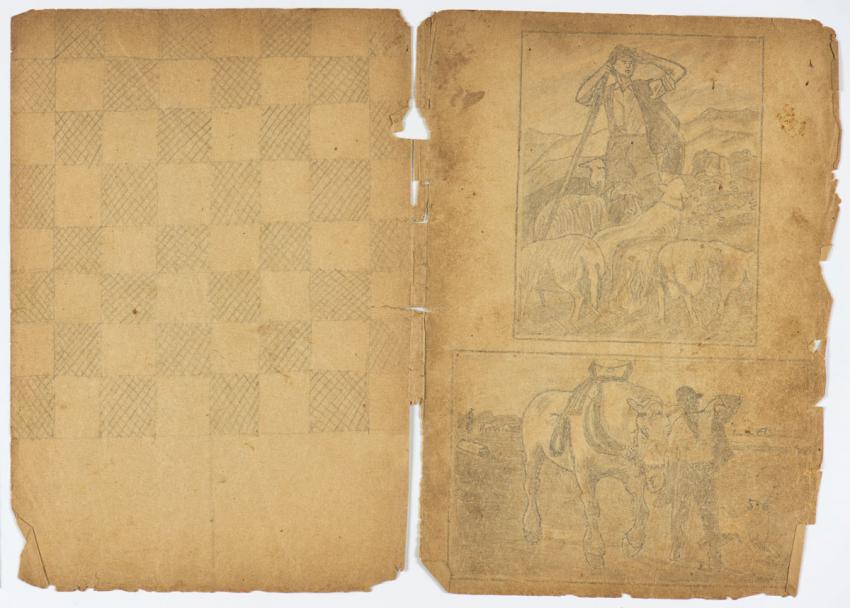
Chessboard drawn by the child Kuba (Jack) Jaget while he was in hiding with his family

Chess pieces and box that Dr. Ernst Furst received in the Friedland labor camp in Poland
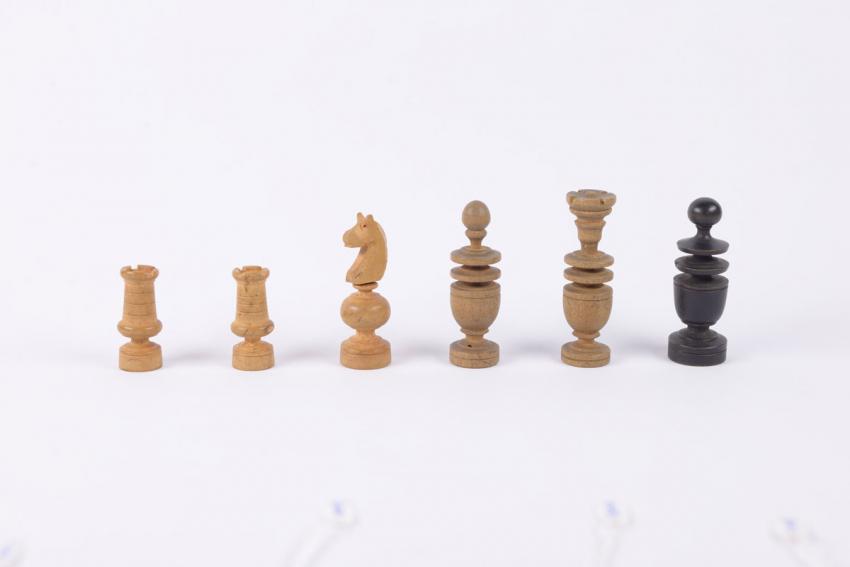
Six chess pieces from the game that the Freiburg family took into hiding
